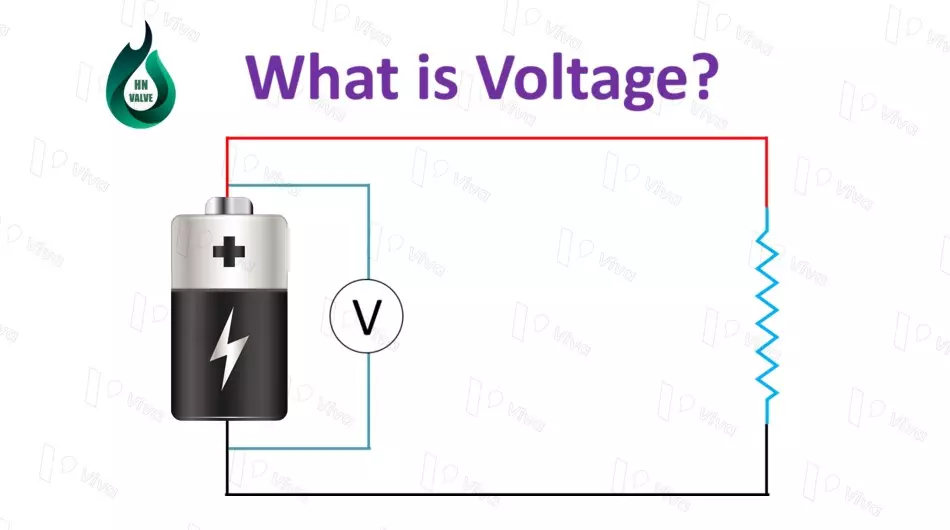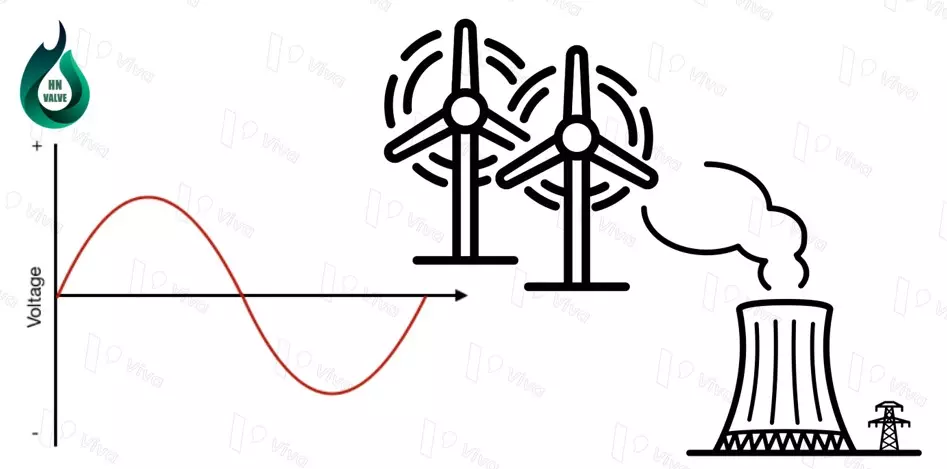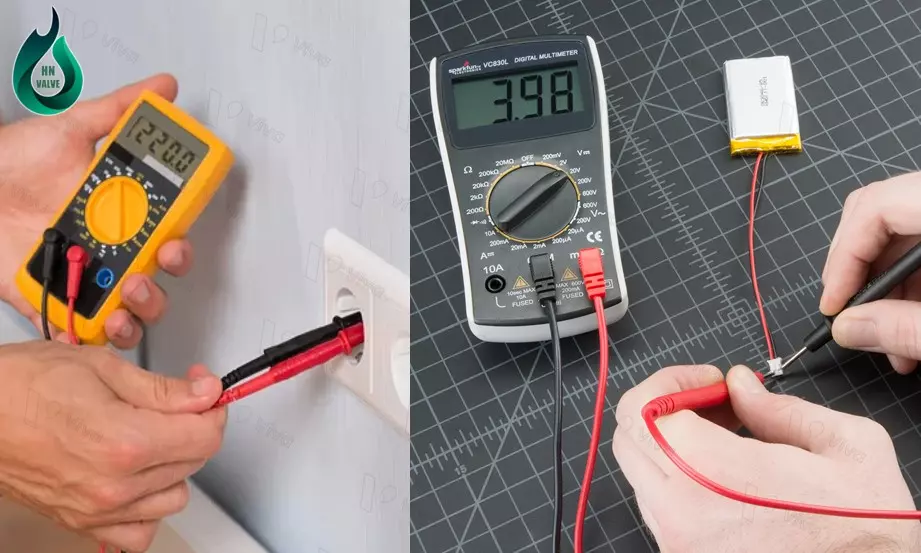Voltage
Voltage – a familiar term in the field of electricity. But do you know what voltage really is? If you’re looking to learn about voltage, this will provide you with useful information.
What is Voltage?
Voltage, also known as electric potential difference, is a concept in physics that measures the difference in electric potential between two points in an electric circuit. The unit of measurement for voltage in the International System of Units (SI) is the volt (V).
Electric current flows through a conductor, similar to how water flows through a pipe. While water is the movement of water molecules, electric current is the movement of electrons. The reason water can move inside a pipe is due to the pressure difference between positions inside the pipe, specifically water flowing from high pressure to low pressure.
Similarly, in the case of electric current, for electrons to move within a conductor or a broader term, an electrical conductor, there needs to be a force pushing the electrons, and this force is called electric potential. The difference in electric potential between two positions on a conductor is called electric potential difference or voltage.
From this, we have the formula to calculate the voltage between two points A and B:
UAB = VA – VB (V)
Where:
- UAB is the voltage between two points A and B, measured in volts (V).
- VA is the electric potential at point A, measured in volts (V).
- VB is the electric potential at point B, measured in volts (V).
In practical applications, voltage is often determined through the following formula:
U = I × R
Where:
- U is the voltage, measured in volts (V).
- I is the electric current, measured in amperes (A).
- R is the electrical resistance, measured in ohms (Ω).

The Relationship between Voltage and Electric Current in an Electric Circuit
The relationship between voltage (U) and electric current (I) in an electric circuit is described by Ohm’s Law, a fundamental principle in electrical engineering. Ohm’s Law states that the electric current in a circuit is directly proportional to the voltage and inversely proportional to the resistance (R). The specific formula is expressed as follows:
I = U / R
This means that when the voltage in the circuit increases, the electric current also increases, as long as the resistance remains constant.
This can also be interpreted according to the power law, which states that the power (P) in a circuit is calculated as the product of voltage and electric current:
P = U * I
This shows that the power in the circuit increases when both the voltage and electric current increase.

Understanding the Voltage of Direct Current and Alternating Current
As you may know, there are two types of electric current: direct current (current with a constant direction over time) and alternating current (current with a changing direction that exhibits periodicity, often with a frequency of 50 Hz).
Whether it’s direct current (DC) or alternating current (AC), voltage is still an important quantity that affects electrical devices and electronic components operating within a system. So, how do the voltages of direct current and alternating current differ from each other?
Voltage of Direct Current
Due to its unidirectional flow, direct current remains constant over time. The voltage waveform of DC is a straight line parallel to the time axis, indicating that the voltage does not change with time.
Typical examples of DC power sources are batteries and accumulators, which provide various voltage options such as 1.5V, 3V, 12V, 24V, and so on.
Additionally, with an initial supply of alternating current, it is possible to convert it into direct current using rectifier circuits.

Voltage of Alternating Current
Alternating current is a current that changes direction over time. The voltage of alternating current is represented on a voltage waveform as a sinusoidal curve running along the time axis, with the voltage values varying according to the sine function (sin(x)).
The voltage of AC will change as follows: initially, the voltage starts from 0V and increases to its maximum value, then decreases back to 0V and continues to decrease to its minimum value, after which it gradually increases back to 0V. The entire process corresponds to one cycle of operation for alternating current.
The residential power system in Vietnam operates on alternating current with a voltage of 220V and a frequency of 50 Hz. This means that within one electrical wire, 50 cycles of alternating current direction change occur.
In some countries, alternating current with a frequency of 60 Hz is used, such as the United States, Canada, Taiwan, and others.
AC current is generated by power plants, then the voltage is stepped up before being transmitted through the power grid system. This is done to minimize power loss during transmission. Before the current is used, it is transformed once again to an appropriate voltage level for electrical devices, typically 110V or 220V with a frequency of 50 Hz or 60 Hz (depending on the electrical grid system of each country and region).

Measuring Voltage
Measuring voltage is one of the important tasks for electrical systems or devices. It can be performed regularly to check and evaluate the technical condition of equipment and systems, or voltage measurement may be carried out only when there is a malfunction. In such cases, measuring voltage aims to identify the cause of the problem and determine the necessary remedies.
To measure voltage, specialized equipment such as a voltmeter or multimeter is required. Here are the basic steps for measuring voltage:
- Prepare the measuring instrument: Select the appropriate measuring instrument, adjust its settings to the correct type of current to be measured. The direct current voltage measurement mode is usually indicated as (V-), while for alternating current voltage measurement, it is indicated as (V~). Additionally, choose a measuring instrument with a wider measurement range than the voltage value to be measured.
- Proper connection: Correctly connect the measuring leads of the voltmeter or multimeter to the circuit being measured. The positive (+) lead is connected to the positive voltage point, and the negative (-) lead is connected to the negative voltage point.
- Read the value: Read the voltage value displayed on the screen of the voltmeter or multimeter. Make sure the selected voltage unit is correct, such as V (Volts) or mV (millivolts), depending on the magnitude of the voltage being measured.
During the voltage measurement process, always adhere to electrical safety rules. Ensure that you are working in a safe environment, avoid direct contact with hazardous voltages, and follow the instructions provided with the measuring instrument.

Electrical Safety
Electrical safety is an important factor when working with electrical systems or devices. Here are some basic principles to ensure safety when dealing with voltage:
- Understand and comply with safety regulations: Ensure that you understand and comply with electrical safety regulations set by your country and industry. This includes adhering to standards, rules, and regulations related to the use, installation, and protection of electrical systems.
- Use protective equipment: Use protective equipment such as helmets, insulated gloves, safety clothing, and protective goggles when working with high voltage.
- Ensure equipment safety: Regularly inspect and maintain electrical equipment such as switches, sockets, controllers, and measuring devices to ensure they are functioning correctly and do not pose any hazards.
- Disconnect power before work: Before performing any repairs, maintenance, or installation work on electrical equipment, make sure the power source is completely disconnected and confirmed to be safe.
- Training and education: Ensure that individuals working with voltage receive training on safety practices and have a clear understanding of regulations and safety rules when working with electricity.
Note that these are just some basic principles and do not replace detailed instructions and regulations provided by authorized organizations and agencies. Always adhere to specific safety rules and actively seek information about electrical safety regulations applicable to your area and industry.

Regarding any further discussions on voltage, let’s conclude here. For any contributions, questions, or inquiries related to the article, please leave them in the comments section. We sincerely appreciate your time reading the article.
